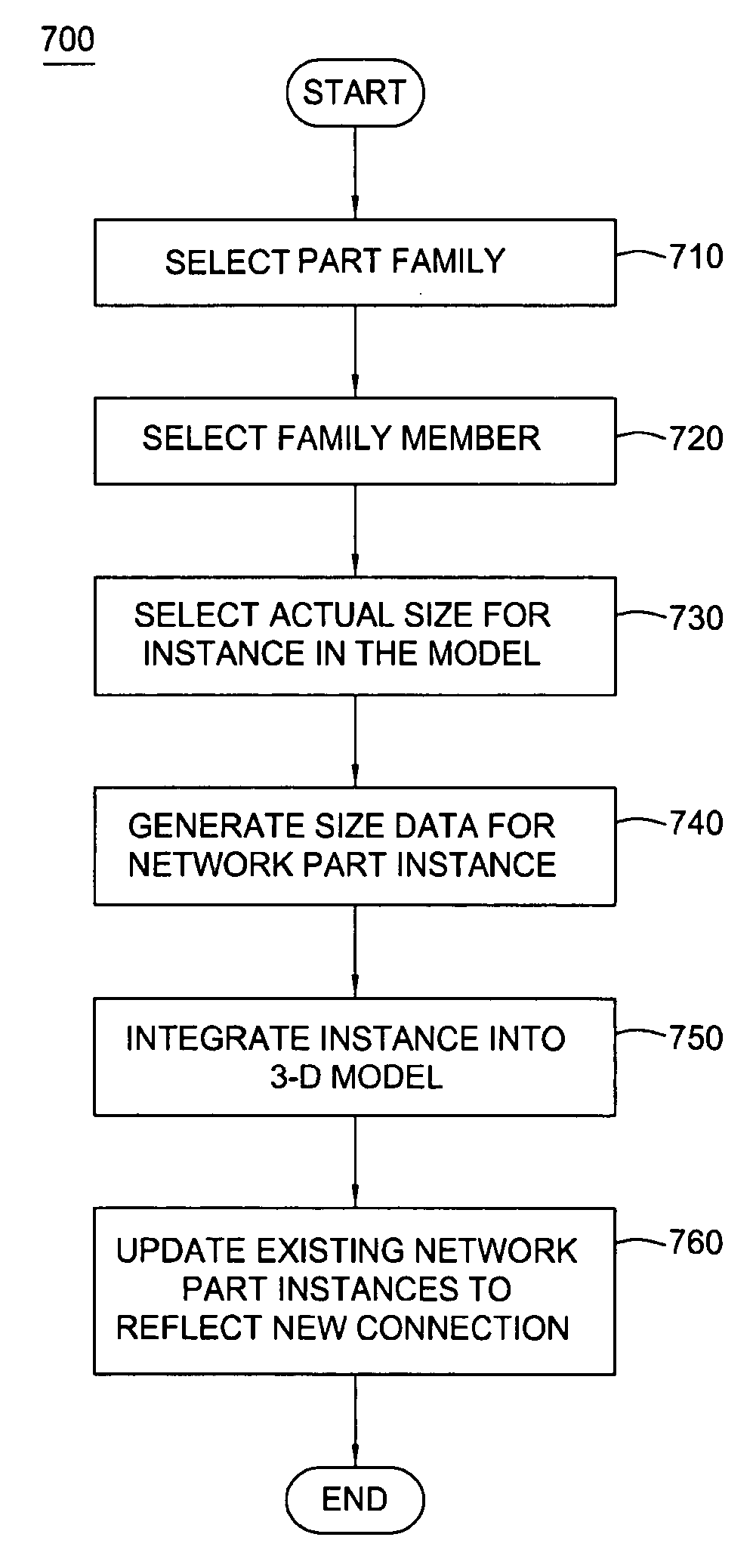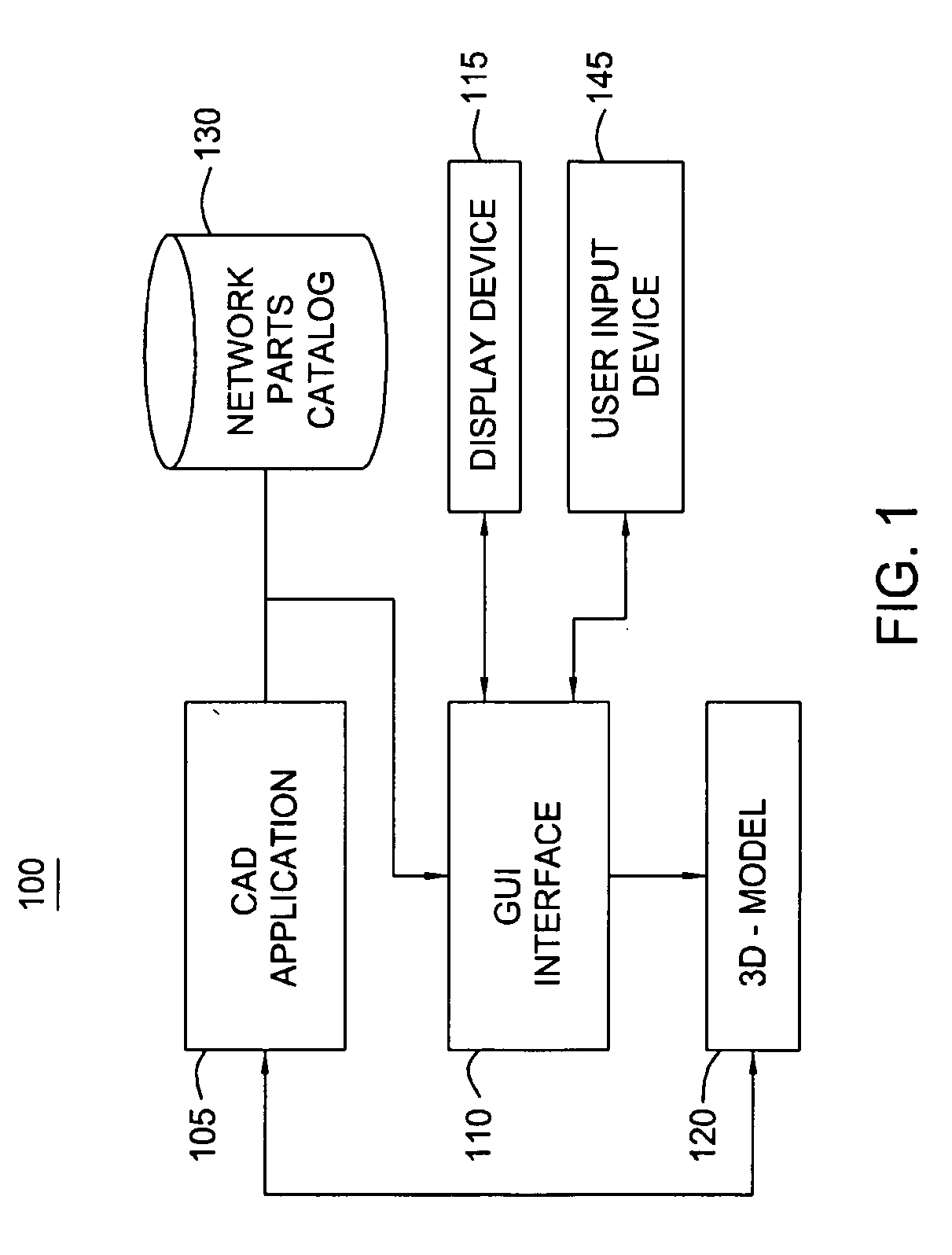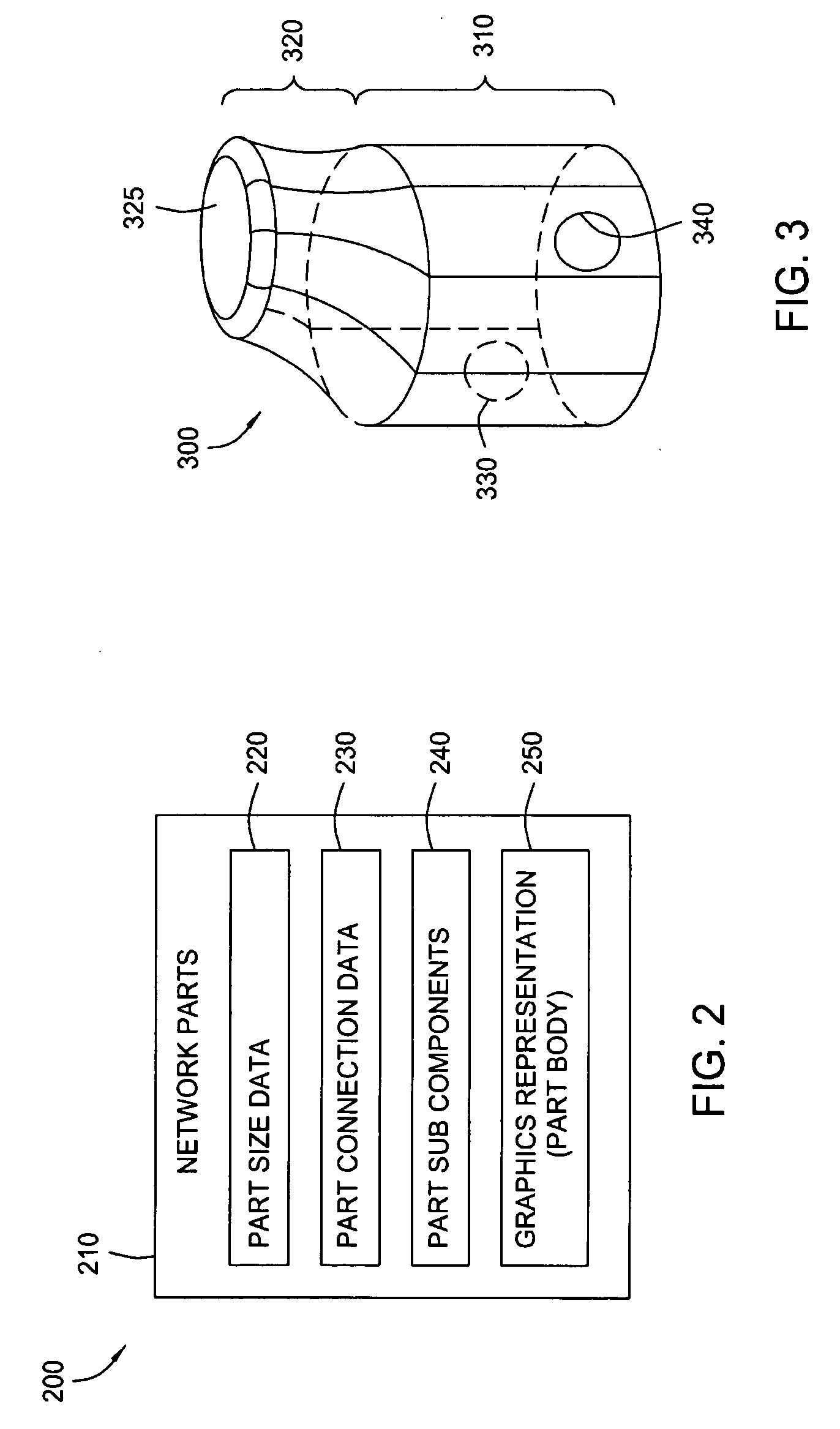Method for dynamically generating multiple views of three-dimensional models for utility networks
a utility network and three-dimensional model technology, applied in the field of computer software, can solve the problems of insufficient description or portrayal of the actual real-world parts being used, time-consuming and error-prone processes, and the editing process is thus quite tedious and laborious. to achieve the effect of improving the reliability and speed of editing
- Summary
- Abstract
- Description
- Claims
- Application Information
AI Technical Summary
Benefits of technology
Problems solved by technology
Method used
Image
Examples
Embodiment Construction
[0026] Embodiments of the invention provide a method, apparatus, and article of manufacture for creating a computer-generated three-dimensional model (3D model) of a utility network that is composed from many network part objects (or more simply, just “parts”). Each part inserted into a 3D model may correspond to a real-world component of a utility network. For example, embodiments of the invention may be used to model a utility network such as a gravity pipe system, etc using network parts such as pipes, manholes, catch basins and storm sewers. However, embodiments of the invention are not limited to modeling utility networks of any single type and may be extended to other utility networks. For example, embodiments of the invention described herein may be adapted to model utility networks such as telecommunications networks, pipeline networks, power grid networks etc.
[0027] In one embodiment, users of a CAD application may be provided with a catalog of network parts or part famili...
PUM
 Login to View More
Login to View More Abstract
Description
Claims
Application Information
 Login to View More
Login to View More - R&D
- Intellectual Property
- Life Sciences
- Materials
- Tech Scout
- Unparalleled Data Quality
- Higher Quality Content
- 60% Fewer Hallucinations
Browse by: Latest US Patents, China's latest patents, Technical Efficacy Thesaurus, Application Domain, Technology Topic, Popular Technical Reports.
© 2025 PatSnap. All rights reserved.Legal|Privacy policy|Modern Slavery Act Transparency Statement|Sitemap|About US| Contact US: help@patsnap.com



